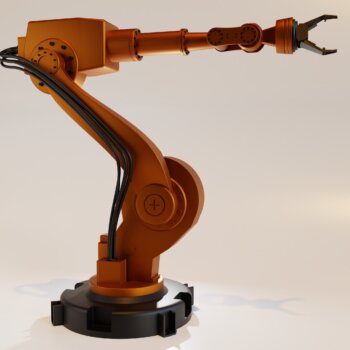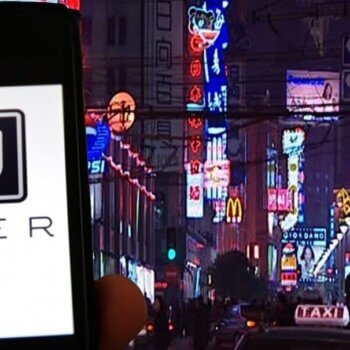The coronavirus pandemic will radically accelerate automated self-service in the food sector.
At the time of writing this, I was sequestered at home with my wife and boys with flu-like symptoms that we can’t rule out as coronavirus due to the shortage of testing kits. After worsening symptoms, our son was tested and the results were negative. We nevertheless spent a week in total isolation. So, like many Americans, we played our role in stress testing online grocery shopping.
After multiple attempts to get through Amazon’s overloaded systems, I placed an order with Instacart. It was a good experience and it’s in times like these that you really feel grateful to have access to this kind of service. It is, quite literally, what is enabling me to feed my family without potentially putting others at risk.

Pandemic Stress on Food Retail
This outbreak is placing intense pressure on food retailers. Per government order, restaurants in many communities across the country are now closed for on-premise dining, and in many cases shifting their operations to takeout and delivery to stay in business. While these closure orders don’t currently apply to retail grocers, these businesses are experiencing another form of pressure as panic buying puts both their systems and their people to the test.
As a result, this virus has now thrust retail grocery workers, along with healthcare workers, into a role that we need to recognize as a new form of heroic public service. We owe a great debt to these people and should be treating them with the utmost respect in these difficult times.
Automation as Part of the Solution
Part of the solution lies in online ordering of food. These systems have been around for many years, but we are now putting them to the test. Online ordering is part of a much larger trend toward automated self-service. In food retail, these systems break business processes into three overlapping, but distinct, tasks: selection, payment, and delivery (or “fulfillment”). You can think of selection and payment are front-end, customer-facing processes, while delivery is a back-end process.
What we are now seeing is a move to remote, digital interfaces as a replacement for front-end processes typically done at a physical retail outlet. While Uber Eats, DoorDash, Grubhub, Instacart, and food ordering from Amazon, Walmart, and Target may be new to many of us, we’ve had the basic technologies for web-based shopping for nearly a quarter century now. These systems are well understood.
The real challenge with online food ordering is the back-end. That is because these systems are currently optimized for physical retail. The total retail groceries market in the U.S. is $655 billion, and of that, online groceries account for $20 billion, or just 3%. Once enough of the market shifts online, food fulfillment systems will look a lot more like Amazon warehouses than Instacart shoppers hand-picking products for us from Safeway shopping aisles. Companies like Takeoff Technologies are already well down the road to building micro fulfillment centers for this new back-end for food retail. Ultimately, these systems could be fulfilled by self-driving cars and drones.
From the perspective of today’s pandemic, this shift can’t come more quickly. When we get to fully automated self-service in food retail, it will give us a perfect solution for maintaining social distancing while we fulfill society’s essential role in distributing food. The coronavirus is going to play a powerful catalytic role in this transformation. The economic stresses we will feel over the next couple of years will largely come from shifting employment from traditional retail operations to the new back-end systems for online order fulfillment. Amazon is currently hiring 100,000 new workers to this end. In Western Washington alone, Albertsons and Safeway are now hiring 2,000 drivers and in-store workersto deal with the crisis.
What Do We Want for the Future of Food?
I am extremely thankful for the availability of online food shopping services right now. As in any crisis, the most pressing need is saving people’s lives, and these systems are helping us address the very real challenge of feeding people while we “flatten the curve” of this pandemic.
Waves of this virus could be with us for quite some time, however, and the resulting surge in people’s use of online food ordering is likely to have a lasting impact on the food delivery sector of our economy. A crisis like this is extremely helpful for stripping away veneers. What it has shown quite shockingly is that our food delivery systems aren’t just a matter of convenience; people’s lives actually depend upon them. As we hunker down, we also need to consider what we want these systems to look like in the future.
Without some form of intervention, we are going to see many of our most beloved local restaurants fail over the next couple of years. There are things that each of us can do individually, such as doing more takeout from our favorite local places. In one case, here in Seattle, a creative developer friend of mine is using GoFundMe to pay local restaurants for food delivery to stressed out healthcare workers. Ultimately, however, this is a much larger problem that will require local governments to come up with targeted policies to help restaurant owners survive and eventually recover from the current crisis. One idea I like is policies aimed at enabling neighborhoods and surrounding communities to make equity investments in struggling local restaurants that they want to preserve and support.
Meanwhile, it is chain restaurants that will have the resources to innovate in response to the crisis and much of that will take the form of increased take-out and delivery and automation. Automated self-service in fast food outlets has seen its share of problems, but this pandemic is likely to provide the surge in demand needed to make it the new reality.
The online grocery wars have been underway for several years now as giants like Amazon, Instacart, Walmart, and Target battle to disrupt this sector of the economy as it automates and moves online. Make no mistake, this crisis is going to accelerate that shift in a very dramatic way. One solution is to build open-source platforms for online shopping and fulfillment that can be shared by local and regional grocers. Similar open-source solutions could also help local restaurants thrive in the era ahead.
If we are not careful, we could emerge from this crisis with a winner-take-all structure in our food delivery markets. It may seem improbable right now, but the remarkable success of Amazon, Google, Facebook, and Netflix in consolidating other markets gives us good reason for concern. As giant corporations rush to our rescue, they do so knowing they are fulfilling their ultimate goal: maximizing profits for shareholders. In building the future of our food delivery systems, what we need is a far more inspiring code within that code.
About the Author
This article was written by Gideon Rosenblatt of The Vital Edge. Gideon ran an innovative social enterprise called Groundwire for nine years. He worked at Microsoft for ten years in marketing and product development, and created CarPoint, one of the world’s first large-scale e-commerce websites in 1996. The Vital Edge explores the human experience in an era of machine intelligence.





























